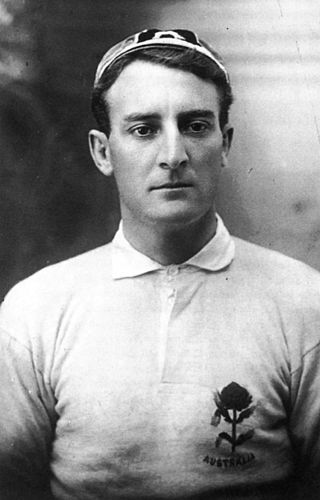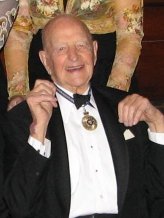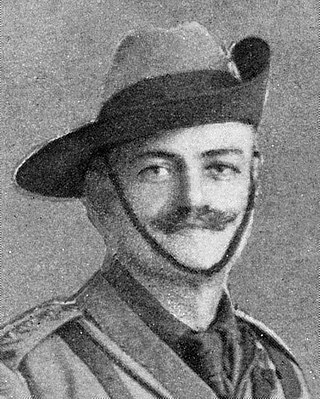
Albert (Bert) Henry Baskerville was a Wellington, New Zealand, postal clerk, a rugby union forward, author of the book Modern Rugby Football: New Zealand Methods; Points for the Beginner, the Player, the Spectator and a pioneer of rugby league.

The Tom Richards Cup, also known as the Tom Richards Trophy, is an international rugby union trophy awarded to the winner of British & Irish Lions vs. Australia test series. It was commissioned for the 2001 British & Irish Lions tour series and the inaugural winner was Australia, who won the series 2–1. This was the first time that Australia had managed to defeat the Lions in a series. Twelve years later, the Lions won the 2013 tour to Australia 1–2, making them the current holders of the trophy. The two teams' first meeting was in Australia in 1899 where they played a four test series, won by the Lions 3–1.

Duncan McGregor, was a New Zealand rugby union and rugby league footballer. He was a member of the legendary 1905 Original All Blacks and later converted to rugby league when he went on the 1907 New Zealand league tour of Britain and Australia. He stayed in Britain following the 1907–08 tour, and opened a sport store as well as playing for Merthyr Tydfil RLFC. He returned to New Zealand after five years and continued to be involved in rugby league as an administrator and official.

Eric Cunningham Dax, AO, FRACP, FRANZCP, HonFRCPsych was a British-born Australian psychiatrist.

Netherne-on-the-Hill is a village in Surrey, England, occupying a plateau once home to Netherne Hospital. The village is across a narrow valley from Hooley in north of the borough of Reigate and Banstead; through the valley runs the Hooley Tunnel cutting and A23, the only road from which the village can be accessed, from two designated side roads; a few metres south of the southern T-junction, the road divides into two grades: the A23 to Redhill, 3 miles (4.8 km) south, and the M23 motorway which has a junction with the M25 motorway within Merstham's boundaries, the former village of the hilltop land. The post town, Coulsdon in Greater London is centred 1.8 miles (2.9 km) due north.

David Revell "Darkie" Bedell-Sivright was a Scottish international rugby union forward who captained both Scotland and the British Isles. Born in Edinburgh, and educated at Fettes College where he learned to play rugby, he studied at Cambridge University and earned four Blues playing for them in the Varsity Match. He was first selected for Scotland in 1900 in a match against Wales. After playing in all of Scotland's Home Nations Championship matches in 1901, 1902 and 1903, Bedell-Sivright toured with the British Isles side – now known as the British & Irish Lions – that toured South Africa in 1903. After playing the first 12 matches of the tour, he was injured and so did not play in any of the Test matches against South Africa.
Imperial Medicals Rugby Club is the name given to the rugby union team of Imperial College School of Medicine Students' Union, a modern amalgam of three formerly distinct hospital rugby clubs each with a long history, having all been founded in the nineteenth century. The teams from Charing Cross Hospital and Westminster Hospital were the first to merge in 1984 following the union of their respective Medical Departments. When St Mary's Hospital, London also merged in 1997 the team was strengthened by one of the two most successful hospital sides in London. Imperial Medics is notable for its recent dominance of the oldest competition in rugby, the United Hospitals Cup, as well as its history and the joint history of its constituent elements which have produced a large number of international players.

The 1899 British Isles tour to Australia was the fourth rugby union tour by a British Isles team and the second to Australia; though the first tour in 1888 was a private venture, making the 1899 tour the first official undertaking of Australia. It is retrospectively classed as one of the British Lions tours, as the Lions naming convention was not adopted until 1950.

The 1911–12 Kangaroo tour of Great Britain was the second ever Kangaroo tour and was actually a tour by an "Australasian" squad that included four New Zealand players in addition to 24 Australian representatives. It took place over the British winter of 1911–12 and this time, to help promote the game of Rugby league in New Zealand, the Northern Rugby Football Union invited a combined Australian and New Zealand team. They became the first tourists to win the Ashes. and the last to do so on British soil for over half a century. The tour was a success in performance and organisation. Matches were well attended, the squad's touring payments were maintained throughout and the players all shared in a bonus at the tour's end.
Conrad "Con" Augustus Byrne was a New Zealand rugby footballer who was part of the professional 1907–1908 New Zealand rugby tour of Great Britain.
Daniel Gilchrist (1882–1964) was a New Zealand rugby footballer who was part of the professional 1907-1908 New Zealand rugby tour of Great Britain.

Blair Inskip Swannell was an English-born international rugby union forward who played club rugby for Northampton, and internationally for the British Isles and later Australia. He was invited to tour with the British Isles on their 1899 tour of Australia and then their 1904 tour of Australia and New Zealand. He played a total of seven Test matches on these tours, and scored one Test try – against Australia during the 1904 tour. After settling in Australia, Swannell played a single game for his new home when they faced New Zealand. He was viewed as a violent player, and this made him unpopular with other players. Former Australian captain Herbert Moran said of him that "... his conception of rugby was one of trained violence".

Sir John Charles Bucknill was an English psychiatrist and mental health reformer. He was the father of judge Sir Thomas Townsend Bucknill QC MP.
Arthur Boniface O'Brien was a New Zealand rugby union fullback who played club rugby for Guy's Hospital. O'Brien is most notable for playing international rugby for the British Isles team on its 1904 tour of Australia, for which he was also elected team manager.
Robert Louis Challoner was a rugby union player who represented for Australia.
The 2002 New Zealand rugby league tour of Great Britain and France was a tour by the New Zealand national rugby league team. The New Zealand national rugby league team drew the series 1.5-1.5 against Great Britain and also defeated Wales and France.
Lennox Football Club was an English 19th century rugby union football club that disbanded in the early twentieth century. It is notable for producing a number of international players and for its role in the Rugby Football Union fight against professionalism.

Netherne Hospital, formerly The Surrey County Asylum at Netherne or Netherne Asylum was a psychiatric hospital in Hooley, Surrey in the United Kingdom.










